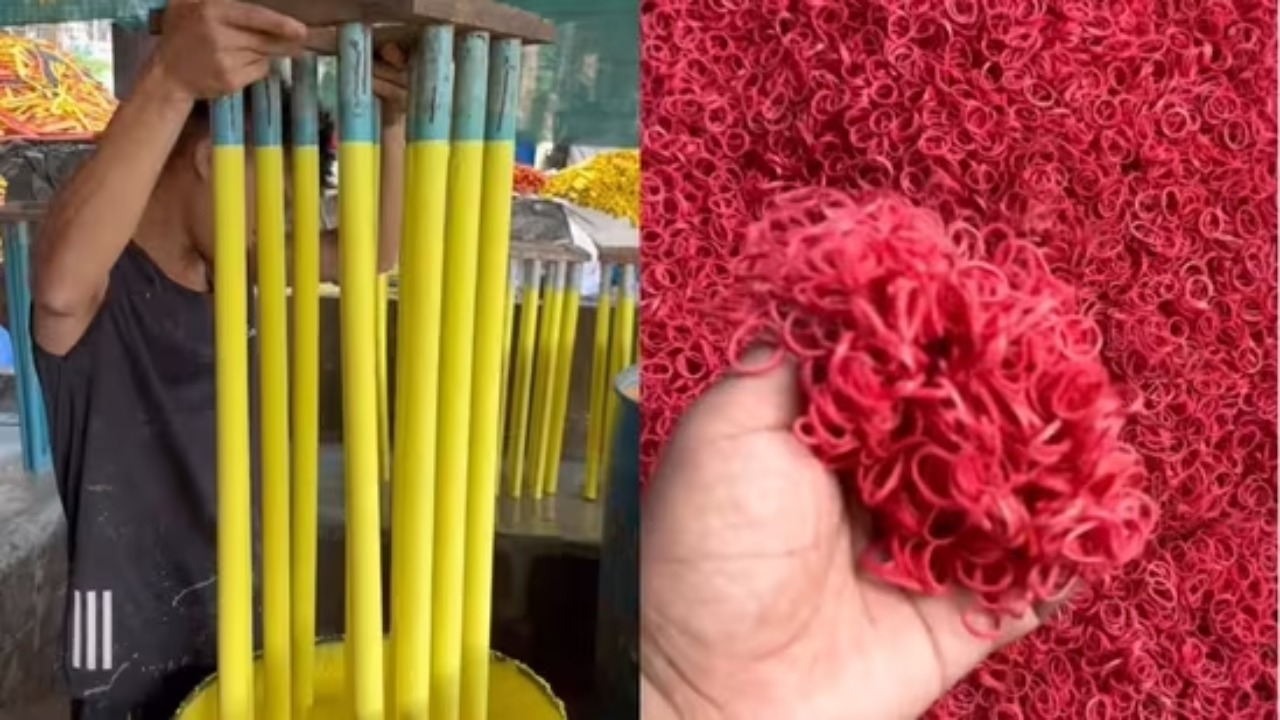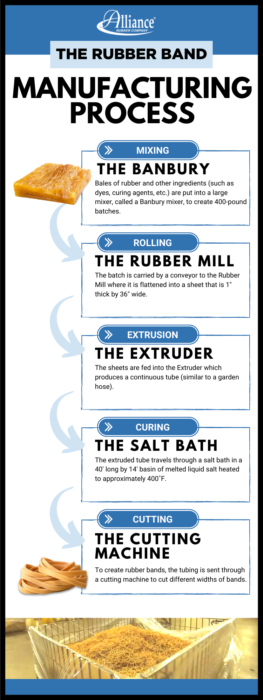Are Rubber Bands Really Made from Chicken? Getting to the Bottom of This Persistent Myth
As someone who regularly uses rubber bands in my daily life, I was quite surprised when I first heard the claim that rubber bands are made from chicken This bizarre rumor has been circulating for years, leading many to question if there could be any truth to it I decided to do some research to get to the bottom of this persistent myth and find out once and for all – are rubber bands really made from chicken?
The Origins of the Myth
So where did this idea that rubber bands come from chickens originate? While the exact origins are unclear, the myth likely stems from the fact that many glue and adhesive products do derive from animal parts. Gelatin, for example, is made by boiling animal bones, skins, and connective tissues. However, just because some adhesives use animal ingredients does not mean this applies to all similar products.
The notion may also come from the fact that chickens, like other poultry, can be processed into mechanically separated meat. This finely textured meat product is sometimes used as an ingredient in certain processed foods like chicken nuggets. However, this bears no relation to materials used in rubber band production.
Examining the Evidence Against Chicken-Based Rubber Bands
Once we move past assumptions and misconceptions, the evidence overwhelmingly debunks the idea that rubber bands come from chickens. Here are some key facts that unravel this myth:
-
Rubber bands are primarily made from latex, a natural rubber derived from the sap of the Pará rubber tree. Synthetic rubber materials are also common.
-
Chickens are made of protein, fats, and water – not an elastic, durable material like rubber.
-
Extracting rubber-like materials from chicken parts would be incredibly impractical and expensive compared to extracting latex from rubber trees.
-
There are videos available showing the actual industrial processes for making rubber bands at facilities. None show any chicken parts being used.
-
Major rubber band manufacturers like Alliance Rubber Company explain their bands are made from latex or synthetic rubber mixtures.
The bottom line is that chickens and rubber bands are utterly unrelated, making the persistent myth that rubber bands come from chickens completely unfounded.
Inside the True Rubber Band Manufacturing Process
To fully debunk the chicken myth, it helps to look at the actual steps involved in creating rubber bands. The main stages include:
- Harvesting the Raw Rubber Material
The base rubber for bands comes from either latex tapped from rubber tree trunks or synthetic rubber produced from petroleum-based chemicals.
- Processing and Treating the Rubber
The raw rubber is mixed with stabilizing chemicals then processed into sheets through mills.
- Vulcanization
This critical process involves heating the rubber compound and treating it with sulfur. The sulfur creates crosslinks between polymer chains in the rubber, giving it strength and elasticity.
- Extrusion and Cutting
The vulcanized rubber sheets are fed into extruders that shape the material into long strips that are then cut to size.
- Assembly and Packaging
The rubber strips are assembled and bonded into circular bands then packaged for shipment and sale.
As you can see, chicken meat plays no role whatsoever in modern rubber band manufacturing. The myth simply does not hold up to scrutiny.
Possible Origins of the Confusion
While rubber bands contain no chicken parts, it’s interesting to consider what factors may have sparked this stubborn urban legend. Here are some potential sources of confusion:
-
Similarity to some animal-based adhesives
-
Assumed connection between chickens and rubbery materials
-
Videos of industrial food processes being misconstrued
-
Unfamiliarity with rubber production methods
-
Sensationalism surrounding “mystery meats” in some processed foods
Though the exact origins remain uncertain, these elements likely combined to produce a myth that just won’t die, despite ample evidence against it. The lesson here is to always look beyond assumptions and verify claims before accepting them as facts.
The Takeaway – Rubber Bands Are Not From Chickens!
After digging into this persisting rumor, I am fully convinced that rubber bands are not made from chickens, mechanically separated poultry parts, or any other animal ingredients. The myth lacks any credible evidence and can be reliably debunked through a basic understanding of rubber band ingredients and manufacturing.

Services & Products by Alliance Rubber
Alliance Rubber is a trusted partner for private label manufacturing. As an ISO 9001:2015 certified lean manufacturer with extensive capabilities and years of experience, we’re prepared to handle orders of all sizes. From basic commercial rubber bands to custom printed rubber bands and produce and floral bands, our patented soft-stretch system ensures the bands are strong enough to secure your bundle while being easier to stretch. Take a closer look at our wide range of consumer and industrial rubber products.
How Are Rubber Bands Made?
 Rubber comes from plants and has been used for centuries by numerous individuals and industries. It was discovered by Europeans to erase pencil marks and proved useful for waterproofing, but the commercialization of rubber was a challenge due to its characteristics (brittle in the cold, gooey in the heat). It wasn’t until Charles Goodyear discovered the vulcanization process in 1839 that rubber was able to be stabilized and used for a variety of purposes. Just a few years later, the rubber band was invented.
Rubber comes from plants and has been used for centuries by numerous individuals and industries. It was discovered by Europeans to erase pencil marks and proved useful for waterproofing, but the commercialization of rubber was a challenge due to its characteristics (brittle in the cold, gooey in the heat). It wasn’t until Charles Goodyear discovered the vulcanization process in 1839 that rubber was able to be stabilized and used for a variety of purposes. Just a few years later, the rubber band was invented.
Today, rubber band manufacturing is a multi-step process. In short, it looks like this:
- The latex is harvested and purified, then mixed with acetic or formic acid to ensure the rubber particles stick together. It’s then formed into slabs and shipped to rubber manufacturers.
- The rubber is mixed with chemicals to enhance or diminish elasticity, change the color, and more.
- It’s put through the milling process, where it’s heated and pressed flat.
- The rubber is cut into strips and passed through an extrusion machine.
- After the curing process, the rubber is sliced into finished rubber bands.
Rubber bands are useful in schools, retail stores, food and beverage companies, the post office, and so many other places due to their stretchability and elasticity. Rubber bands are stretchy because of entropy, which is a state of disorder. When a rubber band is at rest, rubber molecules are tangled in a random mess, meaning they have high entropy. When you stretch it, the disordered molecules straighten, meaning they have less entropy. Once you let it go, the molecules return to their relaxed state or disorder and high entropy.
As you’ve probably experienced, they can only “bounce back” for so long. Cold temperatures make rubber bands brittle and prone to snapping. Oxygen and UV light break the rubber down over time, and eventually the band loses its elasticity—which is why outdoor rubber bands are typically made to be UV and ozone resistant to help prolong their lifespan. These EPDM rubber bands are made of heavy-duty, non-latex synthetic rubber to withstand harsh and ever-changing environmental conditions.
IMPOSSIBLE Rubber Band Challenge!
FAQ
What are rubber bands made out of?
While other rubber products may use synthetic rubber, most rubber bands are primarily manufactured using natural rubber because of its superior elasticity. Natural rubber originates from the latex of the rubber tree, which is acquired by tapping into the bark layers of the rubber tree.
What are synthetic rubber bands made of?
The most commonly used synthetic rubbers are styrene butadiene (SBR), polyacrylates, and polyvinyl acetate (PVA); other kinds include polyvinyl chloride …Nov 30, 2016
What are latex free rubber bands made of?
Aero Rubber is proud to offer the finest non-latex bands: synthetic rubber products made from synthetic polyisoprene rubber.
What are black rubber bands made of?
Black rubber bands are primarily made of either natural rubber latex or synthetic rubber, with the black color achieved through the addition of a pigment, typically carbon black.
How is a rubber band made?
If one imagines a rubber band during manufacture, that is, a long tube of rubber on a mandrel, before it is sliced into rubber bands, the band’s width is decided by how far apart the slices are cut, and its length by the circumference of the tube. A rubber band is assigned an industry-standard number based on its dimensions.
Why are rubber bands made from organic rubber?
Rubber bands are made from organic rubber because it offers superior elasticity. Natural rubber comes from latex, a milky fluid composed primarily of water with a smaller amount of rubber and trace amounts of resin, protein, sugar, and mineral matter. Most non-synthetic industrial latex derives from the rubber tree (Hevea brasiliensis).
What is a rubber band ball?
A rubber band ball is a sphere of rubber bands made by using a knotted single band as a starting point and then wrapping rubber bands around the center until the desired size is achieved.
What is a rubber band?
A rubber band (also known as an elastic, gum band or lacky band) is a loop of rubber, usually ring or oval shaped, and commonly used to hold multiple objects together.
When was a rubber band invented?
The rubber band was patented in England on March 17, 1845, by Stephen Perry. Most rubber bands are manufactured out of natural rubber as well as for latex free rubber bands or, especially at larger sizes, an elastomer, and are sold in a variety of sizes.
What vegetables are covered with rubber bands?
Vegetables such as celery are frequently bunched together with rubber bands, and the plastic coverings over berries, broccoli, and cauliflower are often secured with rubber bands. Rubber bands are made from organic rubber because it offers superior elasticity.
